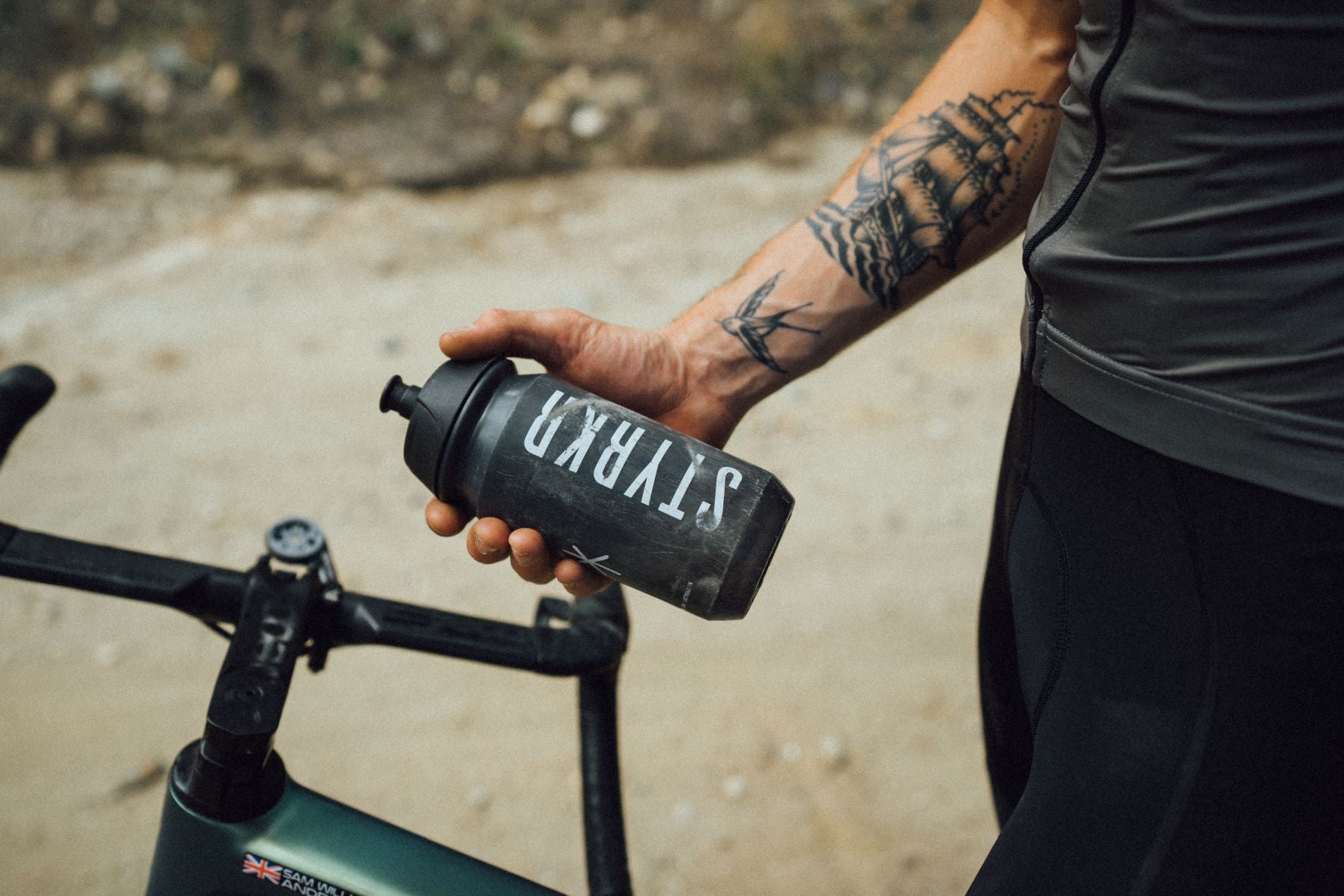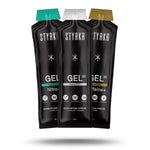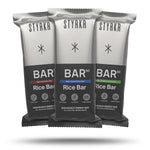To immediately stop leg cramps, stop exercising and gently massage the cramped muscle. Apply light pressure and use your thumbs to relieve pain — work through any knots or tight spots.

Typically, self-massage will provide pain relief. But it’s often only temporary — the muscle cramps may resurface later on, whether that’s the calf muscles, the quads, the thighs or even the feet (the latter can be very painful).
Athlete leg cramps are common and often a result of dehydration. You’re also more likely to experience cramps in the heat, or during/after an intense workout.
Drink plenty of water and get more electrolytes to ease the cramps (and to help prevent them in the future).
The remainder of this blog post will explain other leg cramp symptoms, treatment options, and further preventive measures. I explain why the leg muscles are likely to cramp and the importance of proper hydration to help prevent future cramping.
What you will learn:
- How to stop leg cramps immediately
- Why muscles cramp, and how to prevent this
- The importance of proper hydration and electrolytes to help relieve leg cramps
Is it normal for athletes to get cramps?
Research states that exercise-associated leg cramps (and other muscle cramps) are common.
Athletes may be at greater risk of leg cramps (and other muscle cramping) if they are salty sweaters, or if they work out for a long time in the heat, or at a high intensity.
Keep reading to find out how you can stop your leg muscles from cramping on your next ride, run, or workout.
 What are the symptoms of muscle cramps?
What are the symptoms of muscle cramps?
It doesn’t take a scientist to identify the symptoms of muscle cramps.
And suppose you’re experiencing them as you read this. In that case, you can likely either feel:
- Sudden pain or tightness in a muscle
- Twitching under the skin
- A temporary hard lump in a muscle
Other symptoms may include temporary reduced mobility, cramps at night, or muscle spasms.
Nobody knows exactly why leg cramps happen during exercise, but it’s likely due to increased muscle fatigue and dehydration.
Think about it: how often do you get leg cramps at the start of a workout, compared to, say, two hours into a three-hour-long ride?
Luckily, there are things you can do to reduce leg cramps, even on those longer rides or more intense workouts.
How to stop leg cramps
If you’re looking for sudden pain relief from cramps, gently massage the cramped muscle — this is your best option.
And for less immediate relief, you can try the following:
- Rehydrate
- Use hot or cold therapy
In some instances, muscle relaxants may be prescribed for leg cramps and night leg cramps when other treatment options have not worked.
Rehydrate
If you’re dehydrated, you’re more likely to cramp up.
But it’s not just about drinking water — you need to increase your sodium intake (and other electrolytes) lost via sweat.
On a hot day or during a very intense or long workout, it’s a good idea to drink an electrolyte mix, like SLT07, with water.
This will keep you hydrated and will replace those lost electrolytes to help prevent heat cramps and leg cramps.
If you don't get enough sodium in your diet and exercise a lot or are deficient in electrolytes for whatever reason, you're more likely to get leg cramps.
A proper hydration strategy will also improve exercise recovery.
Related: Why is hydration important in sport?

What is the best electrolyte drink to prevent muscle cramps?
Styrkr athletes love using our electrolyte powders — they are low in sugar, easy to digest, and cause no stomach upsets.
Some powders also contain a kick of caffeine for that much-needed surge of energy mid-workout.
Use hot or cold therapy
Adding either a hot or cold pack to muscle cramps may help it relax. You can also use a heating pad if you have one. This is because both heat and cold increase blood flow to the muscles — it can also reduce pain, inflammation, and swelling.
It turns out that reaching for a bag of frozen peas might not be the worst advice.
Alternatively, if you have leg cramps after a hard workout, you might want to take a hot bath — this will help ease the pain, too. Some people like to add Epsom salts to help their muscles relax.

How to prevent muscle cramps (as an athlete)
Alongside the above advice for immediate leg cramp relief, there are other things you can do to prevent muscle cramps:
- Warm up before exercise
- Drink plenty of water and electrolytes
- Follow a healthy diet (and add more magnesium, if needed)
Warm up before exercise
It’s a good practice to warm up before exercise, especially if your planned workout is particularly intense, whether that’s a set of intervals, a tempo run, or a strength and conditioning session.
A good warm up not only improves performance and reduces your risk of injury, but it may also reduce your risk of muscle cramps.
If cycling, perform a 5 to 15-minute easy spin; if running, try a 15-minute jog; and if lifting weights, lift lighter weights before starting your working sets.
You can also work in dynamic stretches such as leg swings, hip circles, and arm swings for a better warm up and improved mobility.
Drink plenty of water and electrolytes
Cramps and leg cramp seems to be more common when exercising in the heat.
Evidence suggests that triathletes lose more salt during exercise and are, therefore, more at risk of cramping.
If you’re a heavy sweater, regularly exercise in the heat, or perform long-distance events, it’s even more important to drink plenty of water before exercise. You should also take on plenty of fluids during, and after exercise.
Consider drinking an electrolyte mix during hot weather training to replace lost sodium and other electrolyte imbalances. This will also reduce your risk of exercise-associated muscle cramps (lost fluid + electrolytes + fatigue).

Follow a healthy diet (and add more magnesium, if needed)
Everybody knows the importance of a healthy diet, especially if you’re an athlete.
But if you commonly encounter leg cramps and you’re getting the fundamentals correct (a good hydration strategy, warming up before exercise, etc.), then it’s possible that you might have a magnesium deficiency.
Eat more leafy greens, like kale, spinach, and broccoli, to increase your magnesium intake. Besides, they’re delicious and nutritious!
Key takeaways:
- Leg cramps are common in athletes and often happen when exercising in the heat or for extended periods
- If you're a salty sweater, you are more likely to experience leg cramps because you will lose more sodium (this electrolyte is key in preventing muscle cramps)
- Drink plenty of water and electrolytes to sustain proper hydration and reduce your risk of cramps
- To immediately stop the leg muscles from cramping, gently massage the cramp or apply hot or cold therapy, like an ice pack or a hot bath
- Rehydrate as soon as possible if you have been exercising, like running or cycling
FAQs
How do runners stay hydrated during a marathon?
Marathon and ultra-marathon runners drink before and during the race to stay hydrated. This usually involves an electrolyte mix to replace lost electrolytes, including sodium from sweat. Runners grab drinks from aid stations or are handed drinks by their team.
Related: How to stay hydrated during a marathon
How do F1 drivers stay hydrated during a race?
F1 drivers have a drinks system in the cockpit of the car. They use long, twisted straws to drink without taking their hands off the steering wheel. They also use ice vests to stay cool, especially during the hotter events on the calendar.
How to stay hydrated while exercising?
It depends on the type of exercise, the intensity, and the weather. We recommend calculating your sweat rate and aiming to drink enough fluid to prevent a dip in performance. That may include an electrolyte mix.
What is the leading cause of muscle cramps in athletics?
One of the main causes of cramps in athletics is dehydration, mainly a loss of salt through sweat — this imbalance can cause the leg muscles and others to cramp.



